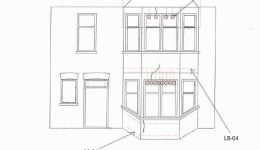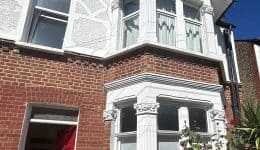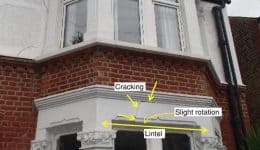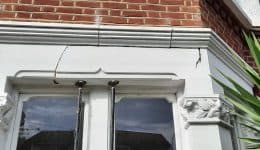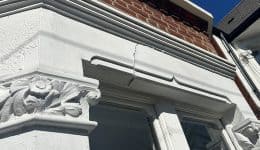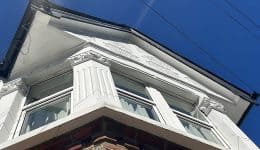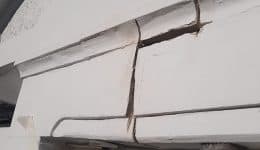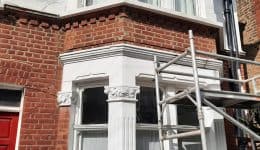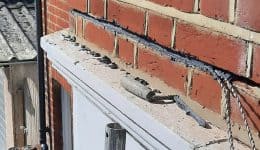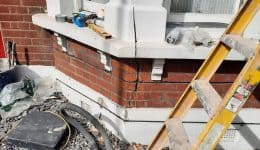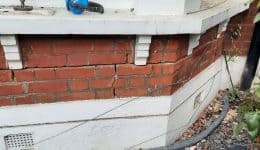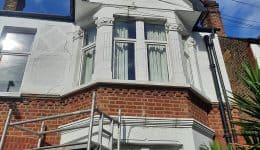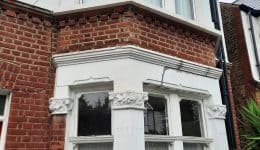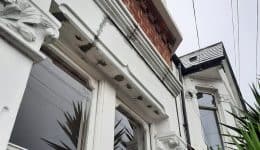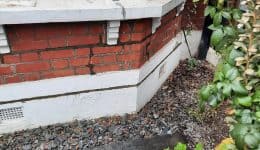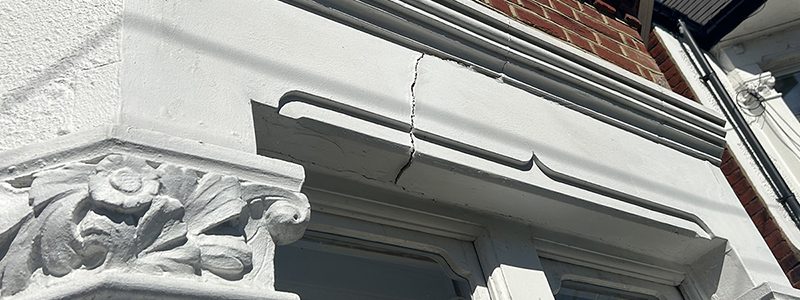
Cracking in the Brickwork of Bay Window
Due to cracking in the brickwork and sills in a two-storey bay window, the owner of an Edwardian property in South West London employed the services of a Structural Engineer.
The engineers report stated that the lintels over the central panels of the bay had cracked vertically/diagonally, both above the ground-floor and first-floor windows. There was no significant cracking in the brickwork above the ground-floor lintel, and only a 0.5mm-wide crack in the gable masonry. There were no signs of significant distortion such as would indicate that subsidence had taken place. In the ground-floor lintel the north part of the lintel had rotated slightly anticlockwise and had dropped by 5-10mm relative to the south part.
The cause of the cracking could not be fully determined but was deemed to be due to the low tensile strength of the lintels and relatively historic. Although it had been repaired cosmetically, no structural repair had been carried out.
Following several recommendations from the structural engineer, the property owner chose a solution utilizing helical bar reinforcement and contacted Newman’s.
Following a visit by one of our surveyors, a repair scheme was designed as per the structural repair drawing below.
Repair Method
To repair and strengthen the lintels, twin bands of Steadfast’s Helicalfix high tensile strength, stainless steel helical bar were installed. The bars were installed horizontally, into the bed joints between the floors, across the entire width of the bay, to reconnect the cracks and redistribute the structural loads.
The cracks in the brickwork were repaired using single bands of Helicalfix crack stitching bars. The shorter lengths of stainless steel helical bar are inserted horizontally into the bed joint across the cracks, reconnecting the brickwork on either side.
Grouted helical ties were then installed vertically to reconnect the lintels to the masonry above.
Although not reflected in the photos, all areas of masonry and mortar disturbed during installation were made good to provide an almost invisible repair that the client was very pleased with.
